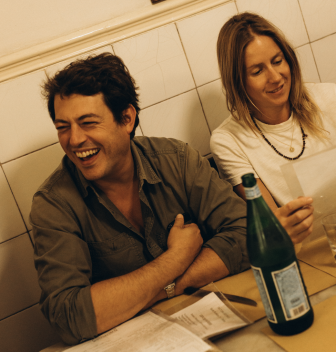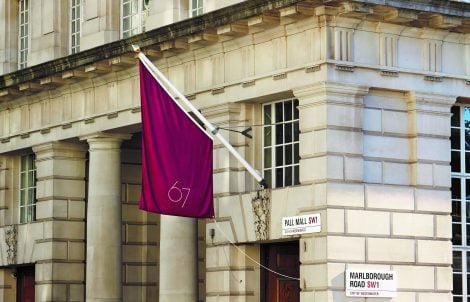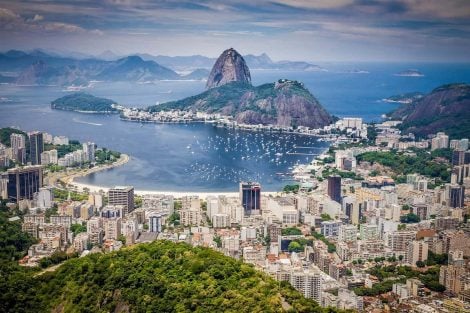When one speaks of Venice — of gondolas, canals, churches, and bacari — the last thing that would come to mind is a vineyard. The city is one of the most visited places in the world, flooded daily by tourists who fill St. Mark’s Square to the point of making it impassable. It certainly does not attract millions of visitors for its winemaking tradition. And the pedoclimatic conditions, with their hostile humidity, make it difficult to imagine any local wine production. Yet, there was a time when the urban space of La Serenissima was dotted with small vineyards.
A witness to this largely unknown legacy is a convent in Campo San Francesco della Vigna, home to the Franciscan friars, located in the Castello district, facing the island of San Michele and just ten minutes from St. Mark’s Basilica. The Franciscan complex hides a tiny vineyard of 1,897 square metres, whose history stretches back almost a thousand years. It is a historical, cultural, and landscape heritage that has survived plagues, republics, empires, and wars — and today, it is preserved thanks to the intervention of Santa Margherita, the wine company owned by the Marzotto family.
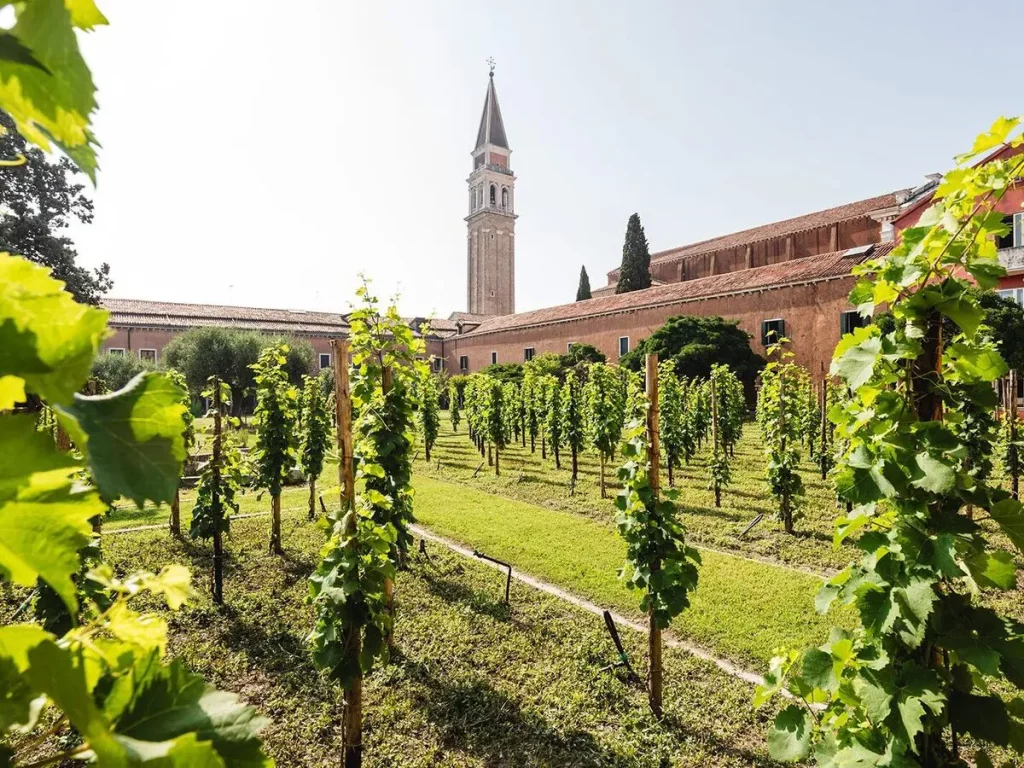
The history of San Francesco della Vigna
It is not the only remaining urban vineyard — there is another, belonging to the Discalced Carmelites, in Cannaregio — but it is certainly the oldest. In fact, the first documents attesting to its existence date back to the 13th century; the most important, dated 1253, is the will of Marco Ziani, son of the Doge, which bequeathed the vineyard (and a small church) to the First Order. The friars later built a cloister around it, to which two more were gradually added — one used to collect rainwater for irrigation, and another to grow vegetables and herbs such as lemon verbena, just as they do today.
The ecclesiastical complex also includes a library of more than 400,000 books, among them several ancient volumes belonging to the Province of St. Anthony of the Friars Minor, including medieval manuscripts preserved under controlled temperature and the supervision of Father Rino. The steady flow of international visitors is due to the Institute of Ecumenical Studies San Bernardino, which welcomes theology students from all over the world. The Church of San Francesco della Vigna, on the other hand, was built later, in the 14th century, to accommodate the growing number of Franciscans.
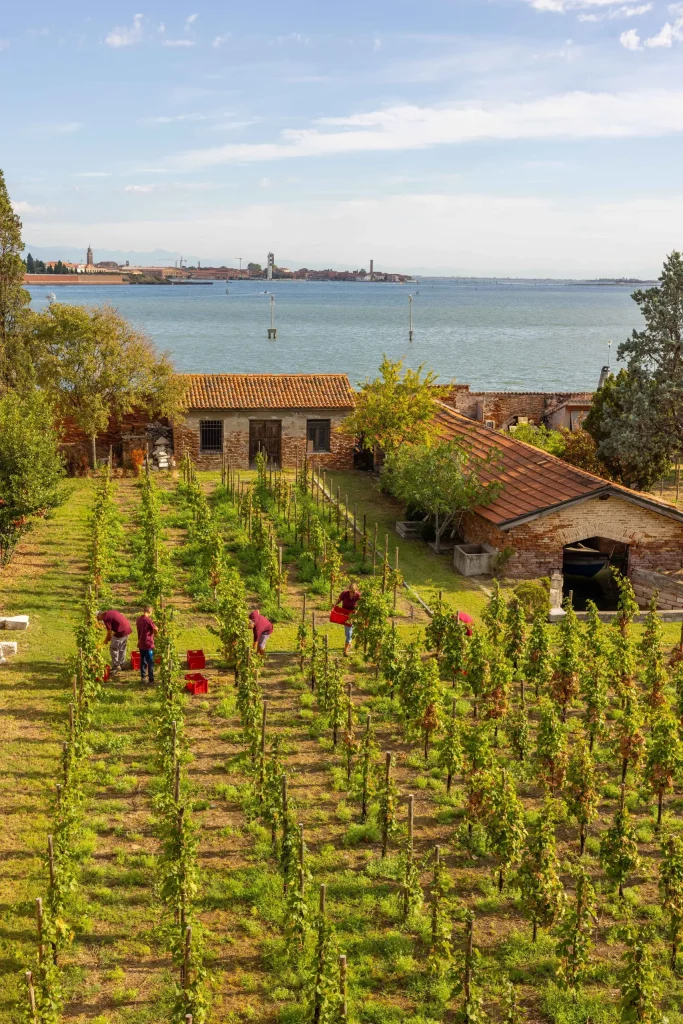
The intervention of Santa Margherita
For centuries, the religious community of Campo San Francesco cultivated vines for Eucharistic purposes. For a long time — except for some pro bono assistance from a Friulian winery that supported vineyard care — winemaking continued under the friars’ own management.
That was until 2019, when the Marzotto family, active in a foundation dedicated to restoring historical and cultural heritage, became interested in the complex after being approached by the friars, who were seeking funding to restore the now unsafe Chapel of St. Mark.
During his visit, Stefano Marzotto discovered within the cloistered area an old vineyard, somewhat neglected compared to its former splendour — a surprising revelation, especially considering that it had been planted with Teroldego, a red grape native to Trentino’s Piana Rotaliana. An unusual choice for the Venetian lagoon, likely introduced by a particularly enthusiastic vicar.
Thus began Santa Margherita’s mission in the Castello district: a philanthropic project aimed at restoring both the architecture and landscape of the Franciscan complex. Alongside the restoration of the votive chapel, the company also took over the vineyard management at San Francesco della Vigna. Making use of the usufruct of the land, the team replaced the red grape variety with bush-trained Malvasia and Glera vines, supported by chestnut poles and traditional vincastro stakes — a method believed to have been used in the past.
The two white grape varieties were planted only after an in-depth study of the territory by a group of experts:
- Malvasia, of Greek origin, historically used by Venetian taverns for its typicality along the Veneto coast;
- Glera, from a clone selected in the Refrontolo biotype museum, known for adapting well to the sandy, saline soils of the Venetian lagoon.
The Marzotto family also provided the friars with the technical expertise they lacked, thanks to agronomist Massimiliano Luison and oenologist Loris Vazzoler.
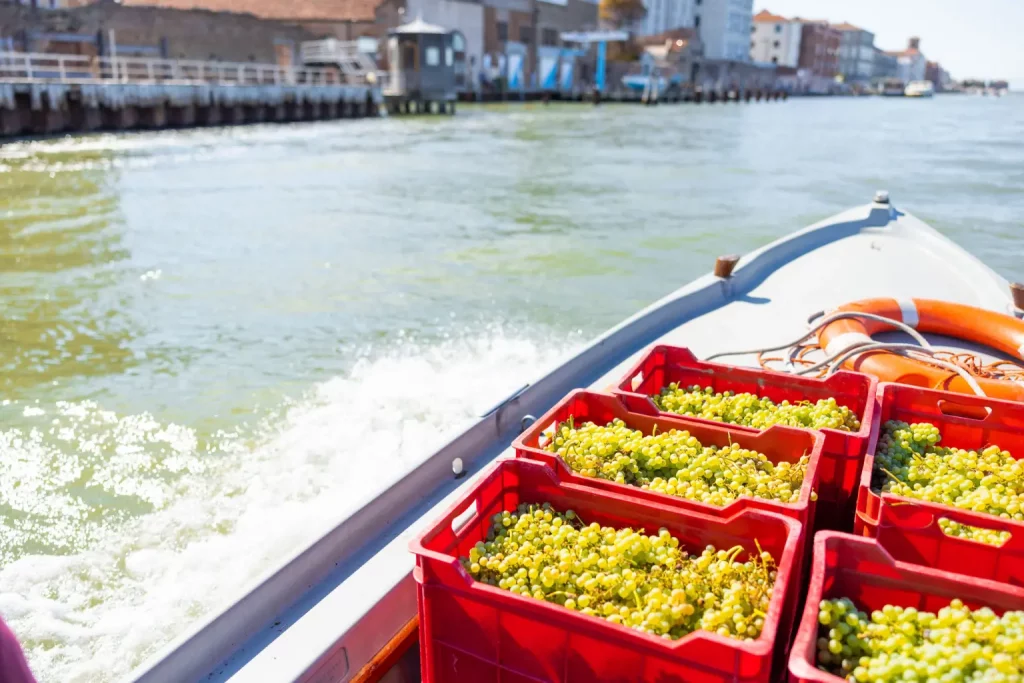
Harmonia Mundi, the first and only sparkling wine of Venice
From its 1,107 linear metres of vines, Santa Margherita produces a single label — a blend of Malvasia and Glera — with a limited edition of 1,107 numbered bottles, available only at a few of the city’s luxury hotels. With the first harvest in 2021, carried out in a single afternoon with the help of boats arriving from the mainland, the Marzotto family created Venice’s first sparkling wine: Harmonia Mundi.
The name derives from a 16th-century treatise on the search for perfect balance — an apologetic reflection on the harmony between humanity and nature. Presented just last year, it is a Martinotti-Charmat method sparkling wine, aged for several months on its lees and produced using an innovative rotating autoclave, a prototype that allows the lees to remain in suspension — a kind of hybrid between traditional bottle fermentation and tank fermentation.
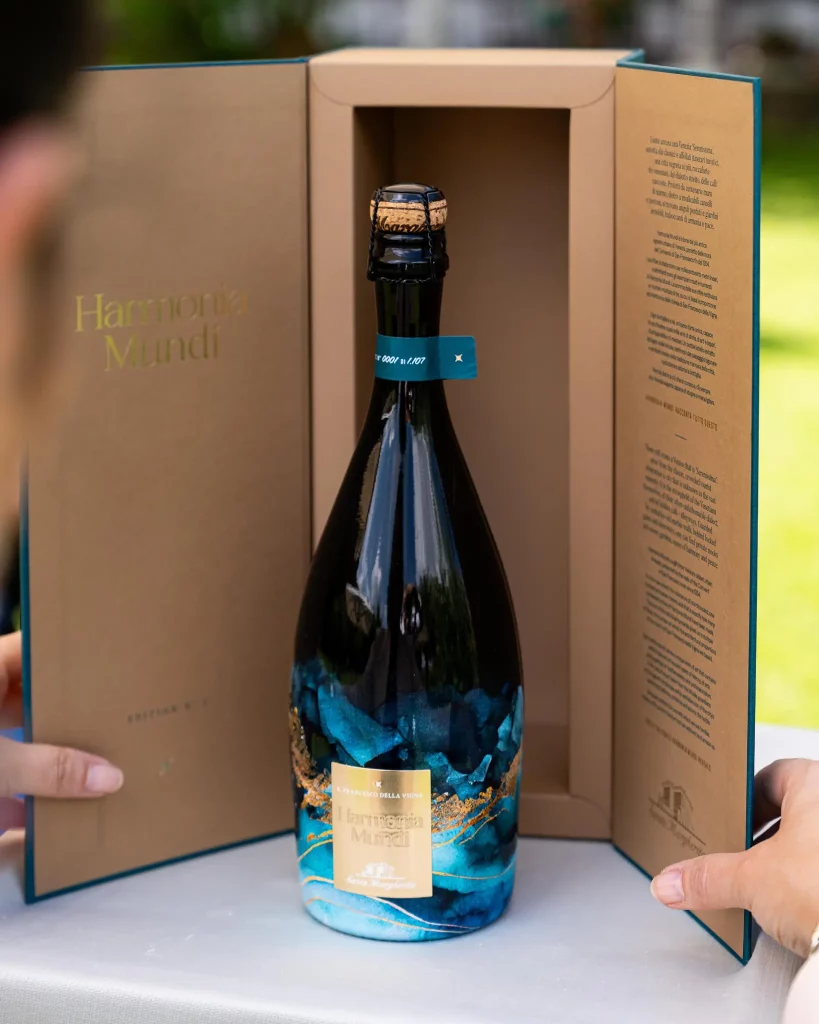
Harmonia Mundi, the only spumante of Venezia @santamargheritavini
As Virginia Stancheris of Herita Marzotto Wine Estates explains:
“We decided to adopt an innovative method that would add further value to the production, fully aware that it will remain a niche project, never meant to expand in volume.”
According to the communications manager, the sparkling wine embodies fresh fruit notes and expresses a distinct salinity that evokes its maritime terroir:
“An expert taster might even hazard a guess at its origin — though never imagining it could come from Venice.”
In any case, the selection goes far beyond numbers or the wine business — and even beyond the realm of collecting. The Marzotto project carries a historical and cultural focus, imbued with a deeply spiritual allure.

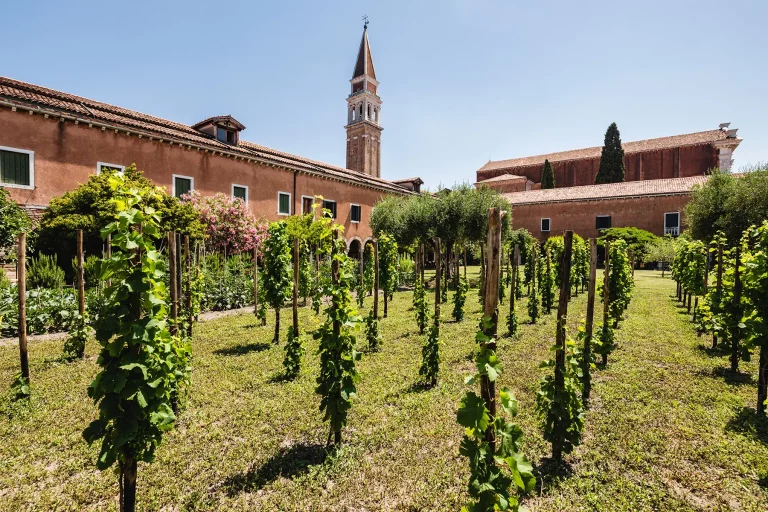
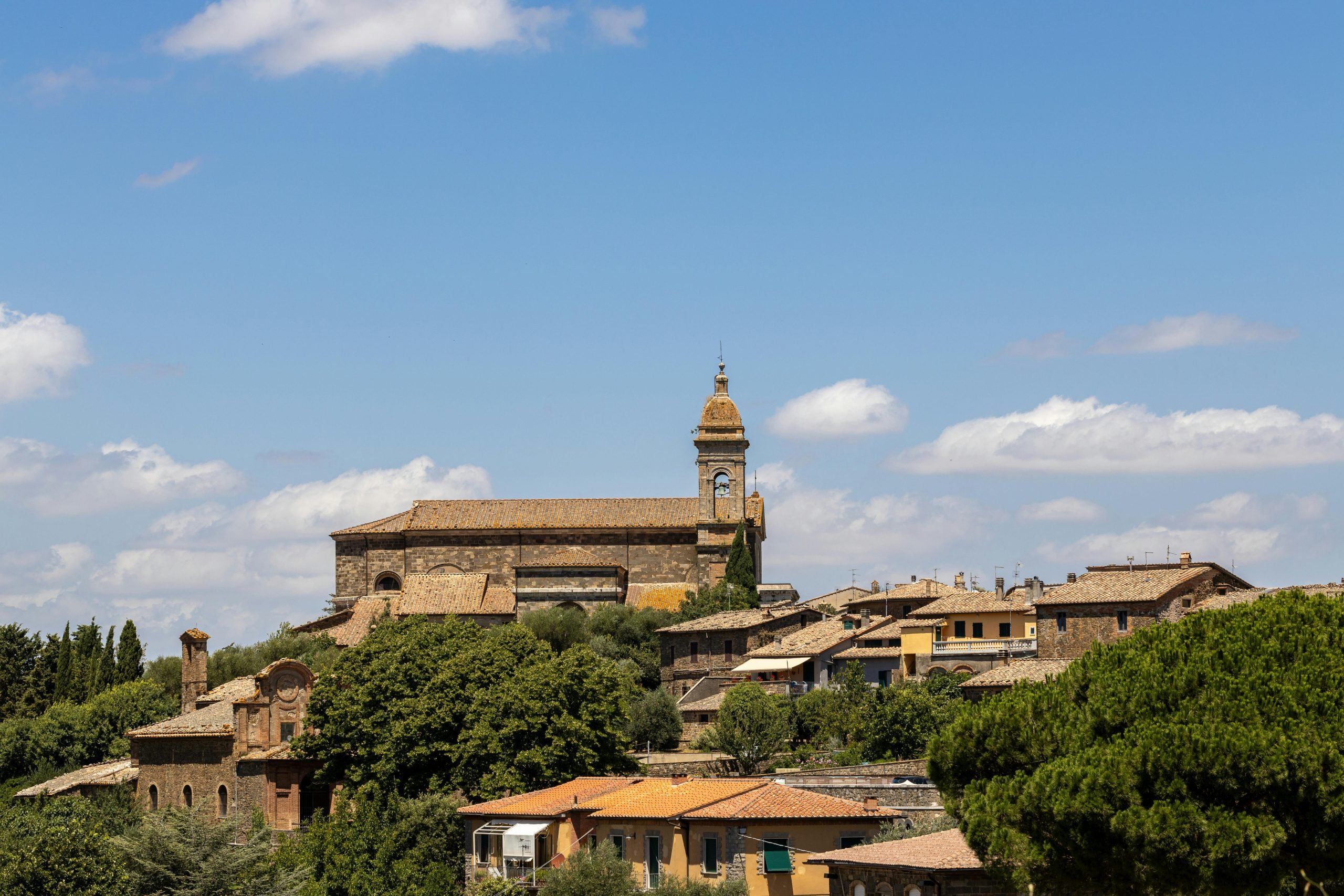 Wine tourism gives €150 million boost to Montalcino
Wine tourism gives €150 million boost to Montalcino 'Watch out for Ireland: wine health warnings have only been postponed to 2028,' warns CEEV secretary
'Watch out for Ireland: wine health warnings have only been postponed to 2028,' warns CEEV secretary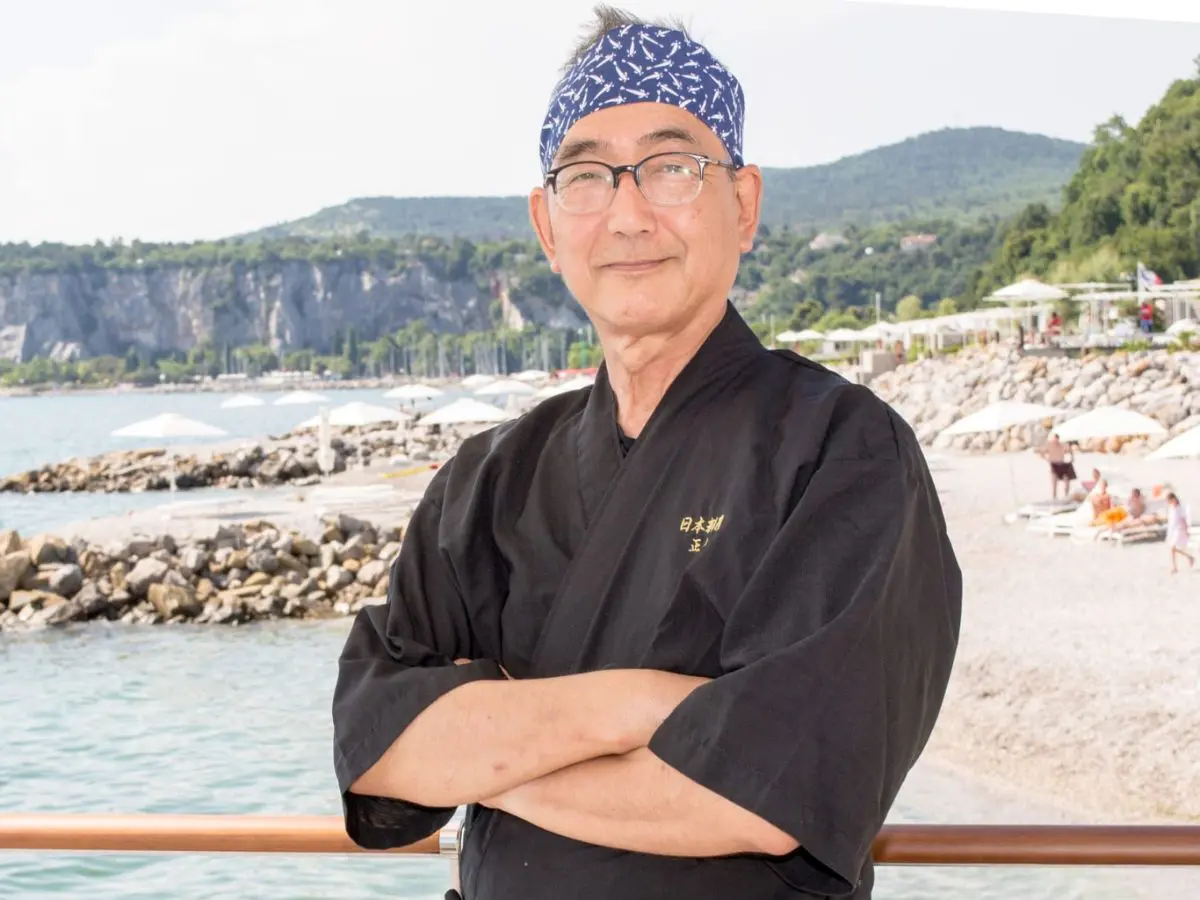 The former food critic who brought authentic omakase to Udine
The former food critic who brought authentic omakase to Udine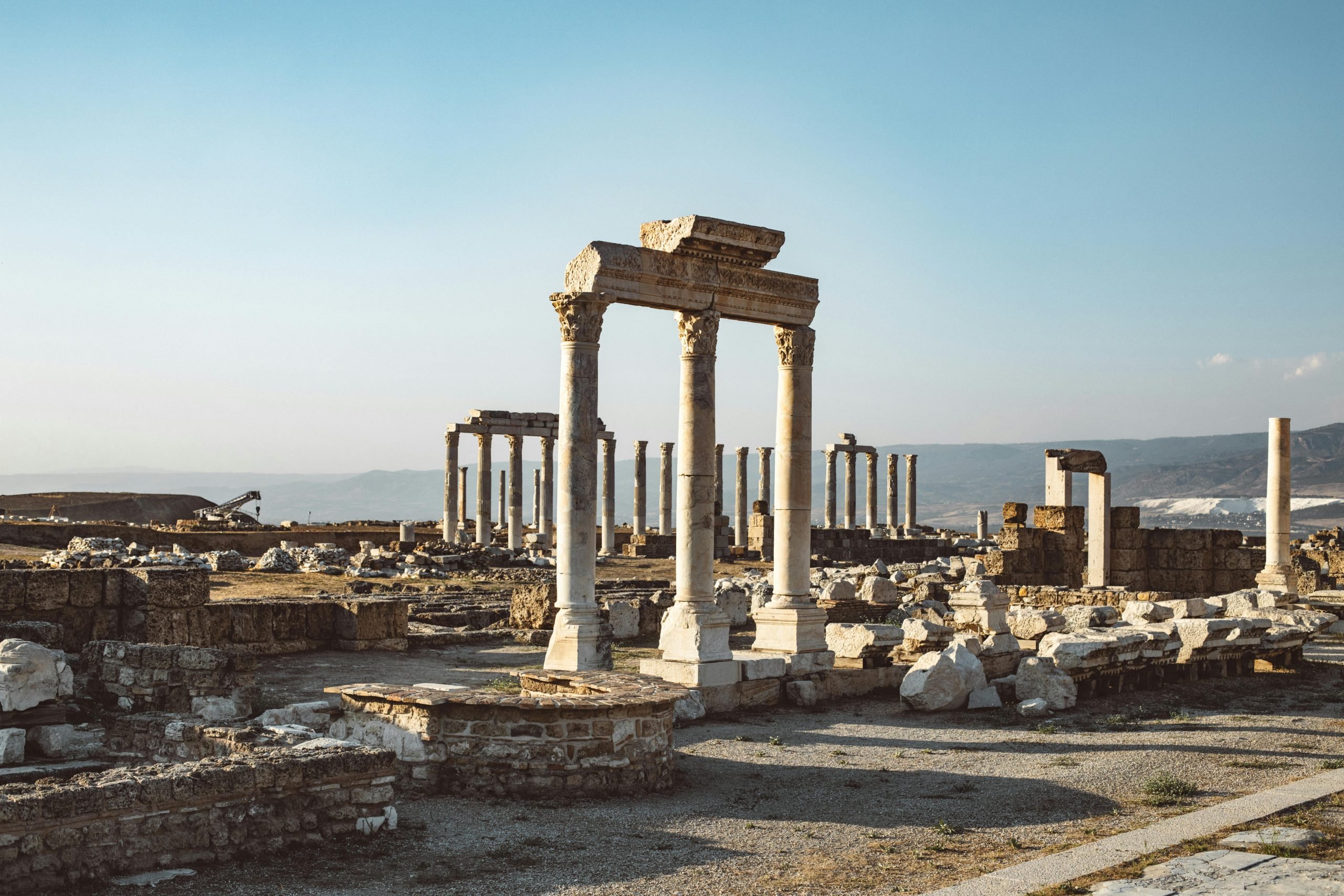 Are wine's woes structural or cyclical?
Are wine's woes structural or cyclical? Jannik Sinner toasts ATP victory with Asti, but Italian newspapers call it 'Champagne'
Jannik Sinner toasts ATP victory with Asti, but Italian newspapers call it 'Champagne'

